The Bishop's Palace, Wells: How a magnificent episcopal residence was built in the shadow of one of our greatest cathedrals
Encircled by water in the shadow of its cathedral, the Bishop’s Palace at Wells is a captivating survival. John Goodall looks at the history of this outstanding building 800 years after its construction. Photographs by Paul Highnam.

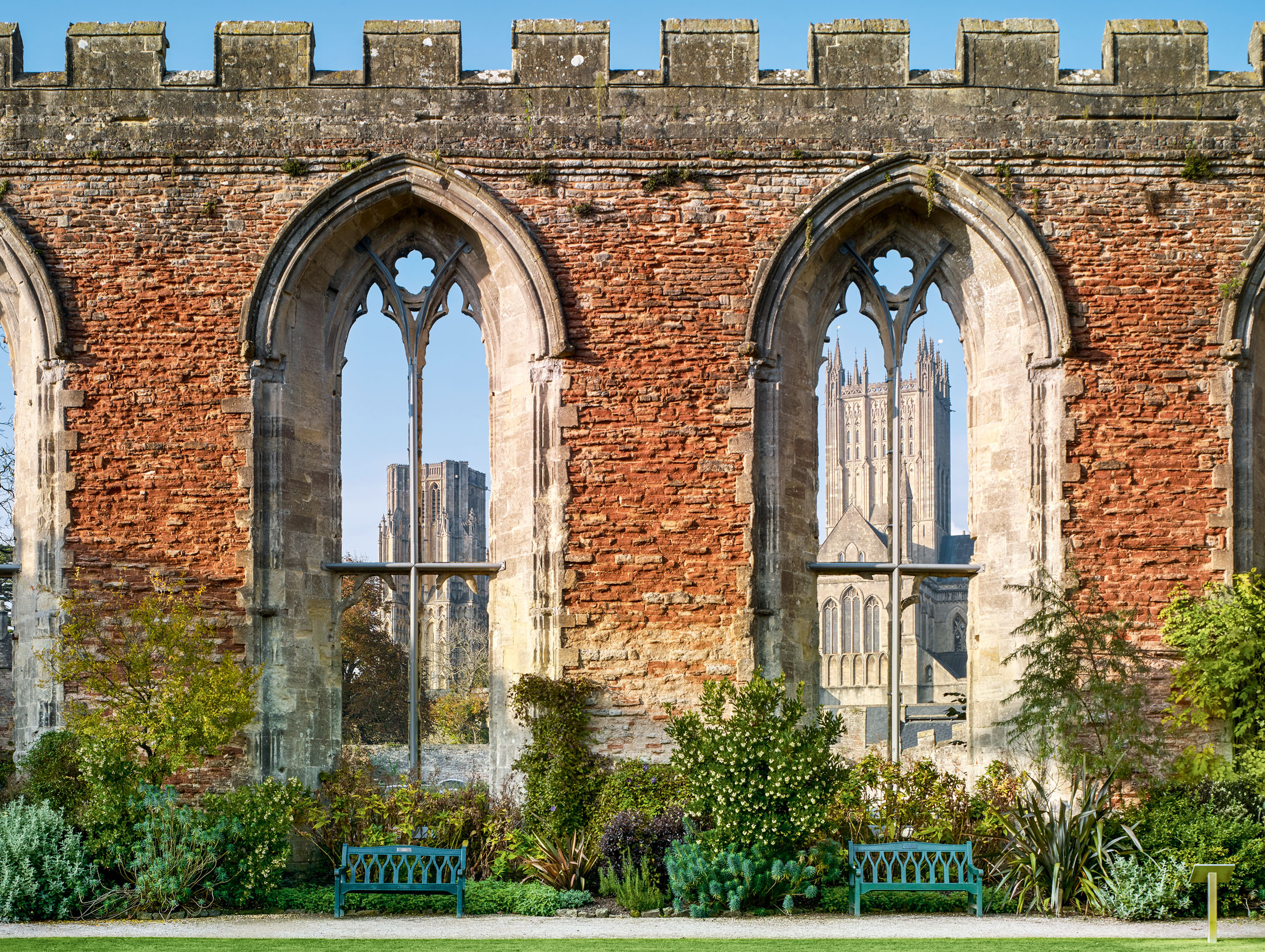
On October 23, 1239, Jocelin, Bishop of Bath and Wells, dedicated the newly completed cathedral church at Wells. Work to this new Gothic building had been underway since the late 12th century and the ceremony must have had enormous personal significance for Jocelin; he had been born and educated in the city, served as a canon here from 1200 and been consecrated bishop in 1206. His contribution to Wells, however, ran even deeper than these details of his life might suggest.
Over the course of the 12th century, there had been disagreement about where the bishopric of Somerset should be based, whether at Wells or at one of two great Benedictine abbeys at Glastonbury and Bath. In 1218, Jocelin abandoned a long-running battle to foist the bishopric on Glastonbury and instead made Bath and Wells his joint cathedrals.

The timing of this decision was no coincidence. England was just emerging from interdict and civil war and, no less importantly, the church itself was possessed of a new sense of purpose in the aftermath of the great Lateran Council in 1215.
These wider events decisively divided Jocelin’s rule into two periods. His early career, which culminated in his consecration as bishop, was typical of an ambitious clerk in royal service (his brother, Hugh, followed a similar course and was elected Bishop of Lincoln in 1209). His family connections and success, moreover, probably explain why, as a new bishop in 1207, he secured a royal licence to create a hunting park to the south of Wells. It was perhaps attached to an existing episcopal residence here.
In October 1216, however, Jocelin attended the coronation of the young Henry III at Gloucester. Henceforth, he became part of a ruling circle determined to restore royal authority in the realm. Bound up with this purpose, and doubtless reinforced by the great power he wielded and the Lateran reforms, was a consciousness of his responsibilities as a bishop. It was for these reasons that he finally settled the issue of his cathedrals (and had the decision endorsed by the Pope), why he reformed the cathedral community at Wells and began two architectural projects central to the dignity of his office and see.
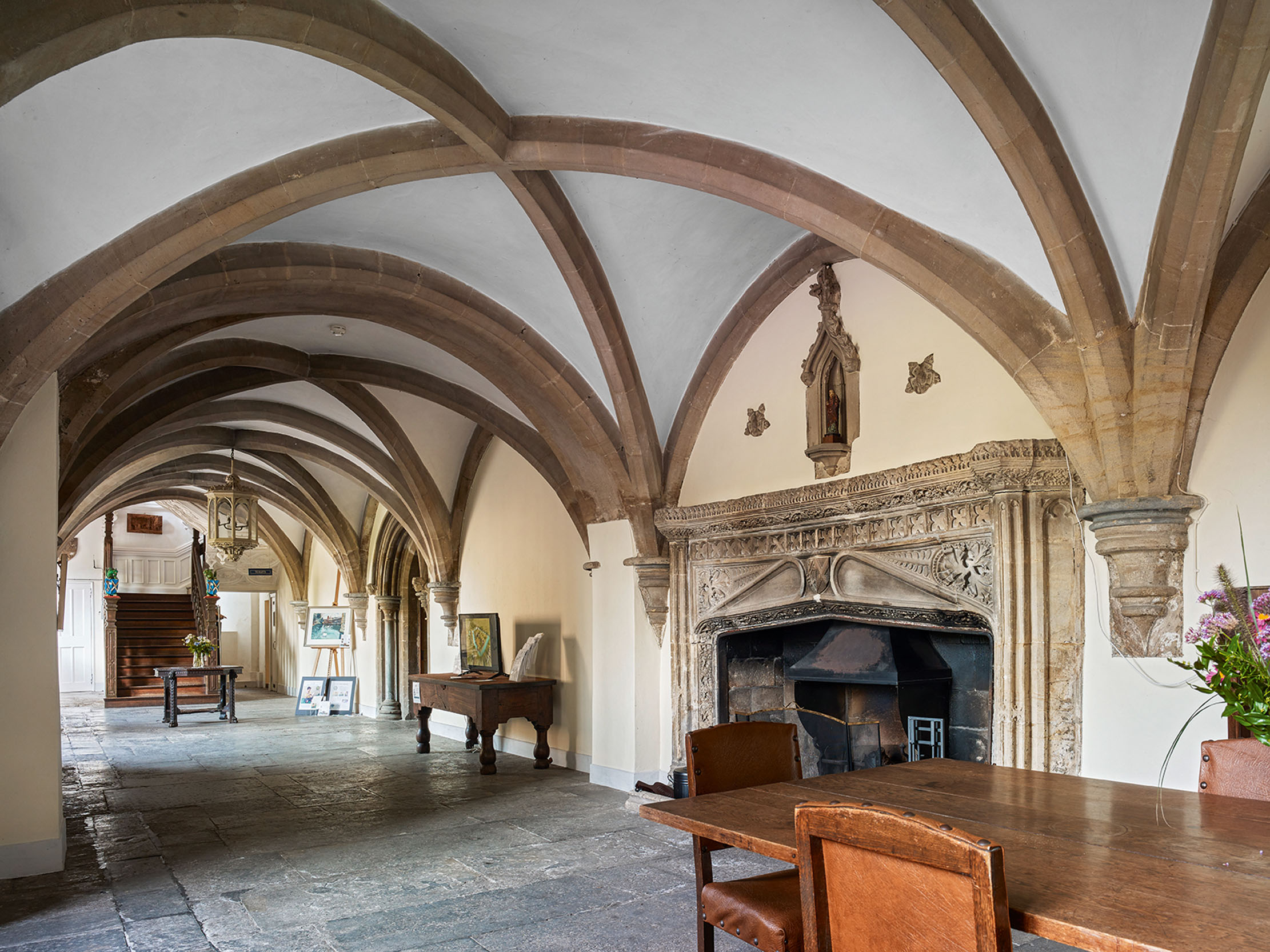
The first was the completion of the church, which, as we have seen, culminated in the dedication of 1239. Undertaken concurrently with this, however, was a magnificent new episcopal palace in the shadow of the cathedral. There is no documentary reference to the start of either project, but, in historical and stylistic terms, they are likely to have run concurrently from about 1220.
No wonder that, when he died in 1242, Jocelin was dignified with burial in the centre of the cathedral choir — the conventional place for a founder — beneath a monumental brass inlaid in marble (now lost), one of the first tombs of this type ever seen in England.
Exquisite houses, the beauty of Nature, and how to get the most from your life, straight to your inbox.
The central range of the palace as it survives today was built by Jocelin. This is rectangular in plan, two rooms deep (a very unusual treatment in medieval domestic planning) and was originally two storeys high (Fig 4). The lower floor is vaulted throughout and the principal rooms, which had large windows, were all arranged on the upper floor (Fig 7). Some of the upper rooms were painted with ochre and red lines to give the illusion that they were built of beautifully cut blocks of stone.
On both levels within the range, there are narrower rooms to the south, where the building faces the entrance court, and broader ones to the north. Today, the southern area of the ground floor is opened out as a single entrance corridor, but it was certainly sub-divided in the Middle Ages (Fig 3). To either end of this, in the angles of the building, are spiral stairs. A porch gave access to the range and a latrine block projected from it to the north.
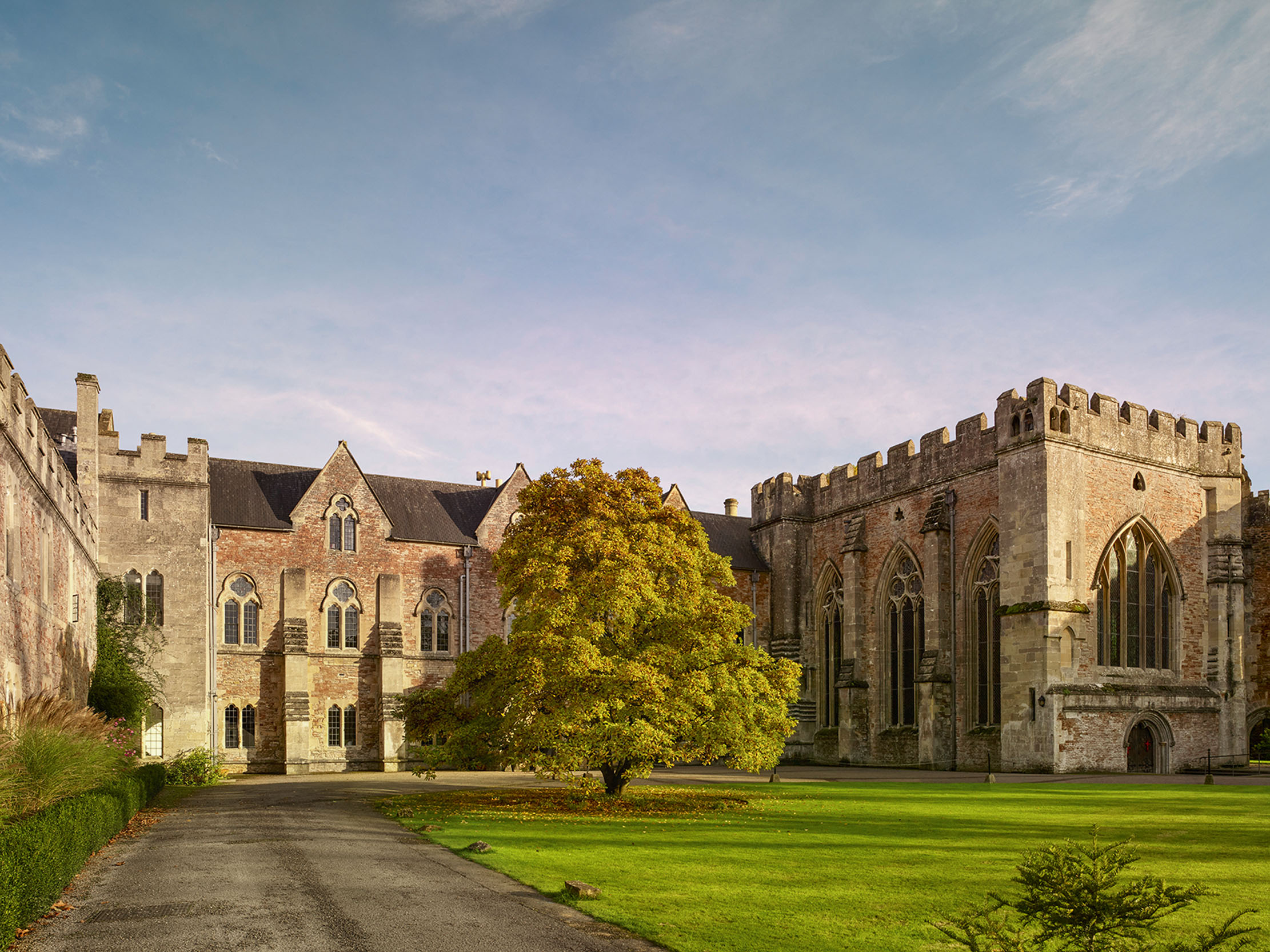
There may have been other buildings that related to this range, such as services and a hall, but most scholars have interpreted it as an entire residence incorporating a bishop’s chamber and hall. Without further evidence, it’s hard to be confident of this.
More important than the function of the rooms, however, is the exceptional scale of this building. In the early 13th century, timber remained the most common material even for grand domestic architecture. Whether or not this is a complete residence, in other words, it was truly palatial.
That didn’t save it from expansion, however, by Robert Burnell, who was consecrated Bishop of Bath and Wells in 1275. Burnell was a close associate of Edward I and, in the 1280s, he greatly extended the palace with a chapel (Fig 8) and great hall. The latter was on a scale to rival the largest halls in England, standing 142ft long and 60ft wide. Archaeological investigation has revealed the remains of an encaustic tile floor that once filled the interior and a description by William of Worcester in the late 15th century states that it was divided by two arcades of arches.
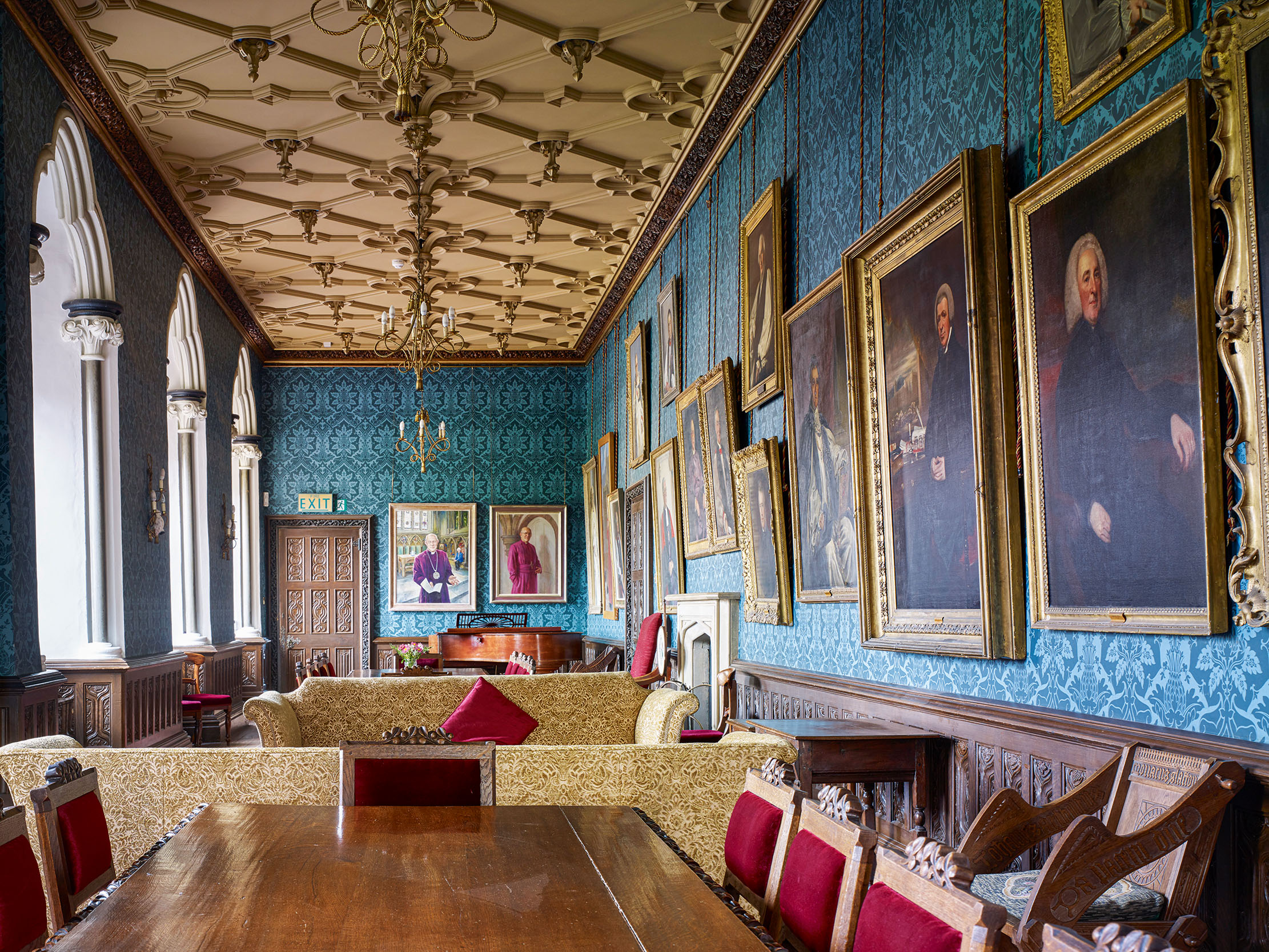
To a 13th-century audience, the form of the hall exterior would have been remarkable. Most halls in this period had multiple gables along their side walls so that they could accommodate tall windows. In Burnell’s hall, however, the side walls were not gabled, but rose much higher than usual to a flat, battlemented parapet. The corners of the building were also emphasised by turrets. In effect, the hall adopted the architectural forms of a castle for decorative display. This was a revolutionary idea that would be developed to spectacular effect in English late-medieval domestic architecture.
At the same time as Burnell improved his palace at Wells, he was constructing another residence at his birthplace at Burnell, Shropshire. Licensed by the King in 1284, it was undoubtedly designed by the same mason and outwardly evokes the keep of a castle. Built two rooms deep, it may also have been inspired by Jocelin’s range at Wells.
In 1340, a royal licence was issued permitting Bishop Ralph (1329–63) to build a wall for the security and quiet of the Wells cathedral community around the churchyard and houses within the precinct. It was almost certainly in connection with this licence that the palace was encircled by wall, towers, gatehouse (Fig 2) and moat, the latter fed by the springs in the shadow of the cathedral that give the town its name. It’s now the home of swans that enjoy celebrity on social media.
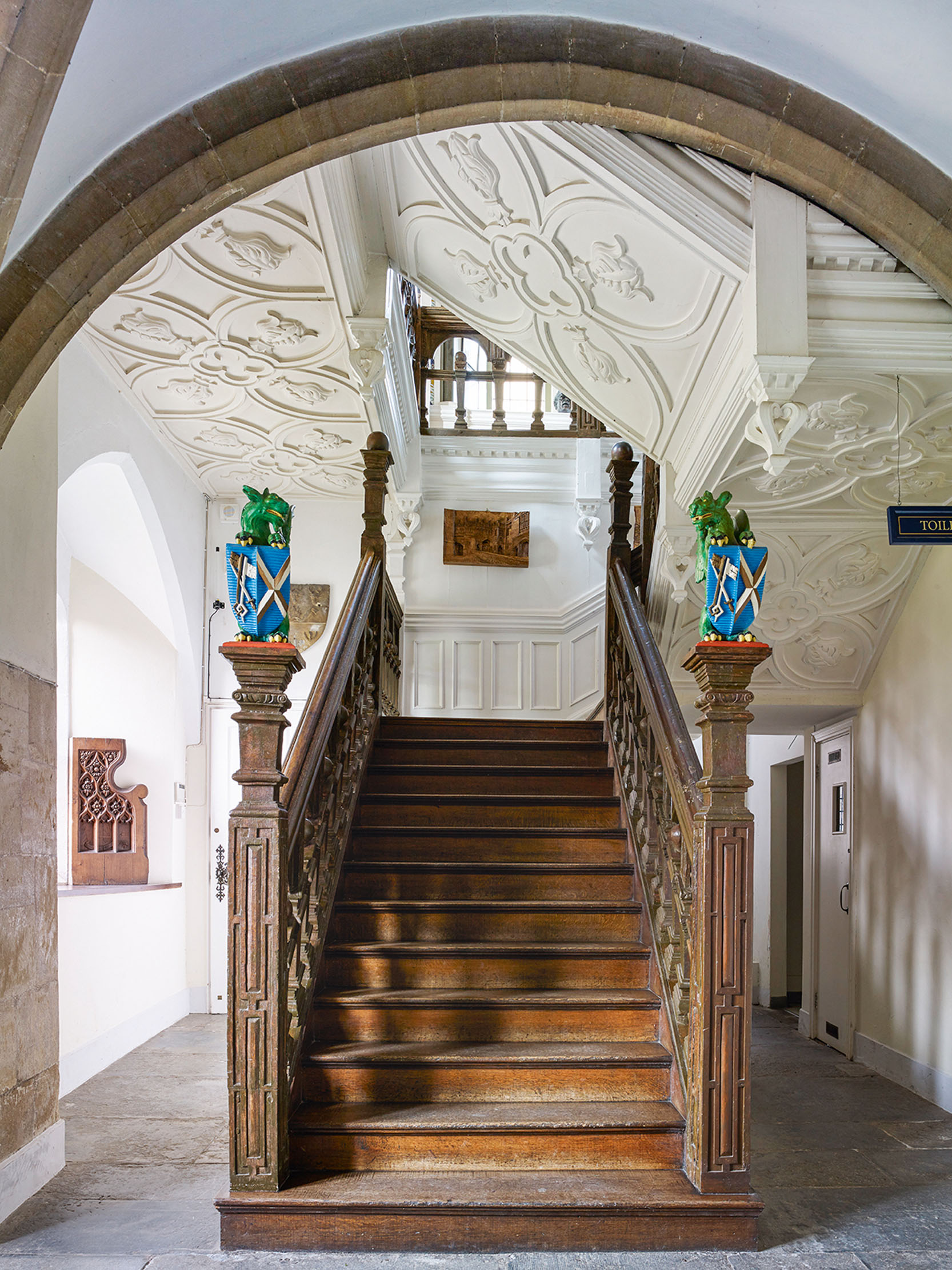
The next transformation of the palace (and also the town), followed the consecration of another local man, Thomas Bekyngton, as Bishop in 1443. Bekyngton reputedly found the palace neglected and his changes to it are admiringly recorded by Worcester, the aforementioned writer and topograper. He notes the construction of a new gate costing 200 marks ‘at the entrance to the palace’, as well as ‘on the site of the grove of trees on the north side of the archbishop’s [sic] hall a cloister, parlour, chambers for visiting lords, a very large kitchen, with conduits of water to the kitchen, buttery, cellar, bakehouse and stewponds for keeping fish, at a great cost of £1000’.
One much-adapted range created by Bekyngton survives, but these wider additions must have extended across much of what is now the open approach to the palace. They included a middle gatehouse, visible in some 18th-century views of the building, which has since been swept away. Nevertheless, when the bibliophile and antiquary John Leland visited Wells in about 1540, he described the palace in terms easily recognisable to a modern visitor: ‘This palace ys strongly waullid and embattled castelle lyke, and hath in the first front a godly fare house yn the midle, and at eche end of the front a round towr… and then is ther one at every corner. The haul of the palace ys exceding fayre. The residew of the house is large and fair. Many bishops hathe bene the makers of it.’

The Reformation had a profound effect on this magnificent building. In 1550, the Duke of Somerset seized the palace and his attainder two years later gave time for the building to be stripped of materials. When the Bishop successfully petitioned for its return, he received a licence to pull down the great hall, which was clearly too large and dilapidated for use. Its roof disappeared, but the partitioned shell of the building survived for the next 300 years.
During the early 17th century, Bishop Montagu (1608–16) made numerous improvements to the palace, including the insertion of a fine staircase, now reconfigured (Fig 6). Much of his work, however, was swept away during the Civil War. Following the abolition of the episcopacy in 1646, the whole property was bought by Cornelius Burges, who, according to Chyle, the 17th-century historian of Wells, busied himself ‘pulling off not only the Lead thereof, but taking away also the Timber… leaving only bare walls, excepting the Gate Houses, which he tenanted out to some inferior people’. Major repairs followed the Restoration in 1660 and Chyle subsequently described the building as having been returned to the ‘the outward appearance as well as the name of a palace’.
Over the course of the 18th century, the building was freely adapted for the convenience of consecutive bishops. Many of these changes were reversed or overlaid, however, during the 19th century. Bishop Law (1824–45) focused his attention on the gardens and partly demolished the ruins of Burnell’s great hall to improve them.
‘This noble hall,’ wrote Sir Richard Hoare in a letter from Stourhead of 1829, ‘forms the principal ornament to the Episcopal Palace, owing to the good taste and judgement of the present worthy Prelate; who, by taking down one of the walls, has introduced it into one of the most beautiful flower-gardens imaginable, where it forms the most picturesque object.’ It’s impossible to disagree with this assessment, but the damage still seems regrettable.
Sir Richard also noted other ‘other judicious improvements’, including the repair of the chapel and the creation of a museum of antiquities and natural curiosities in the ‘the crypt of the Palace’.
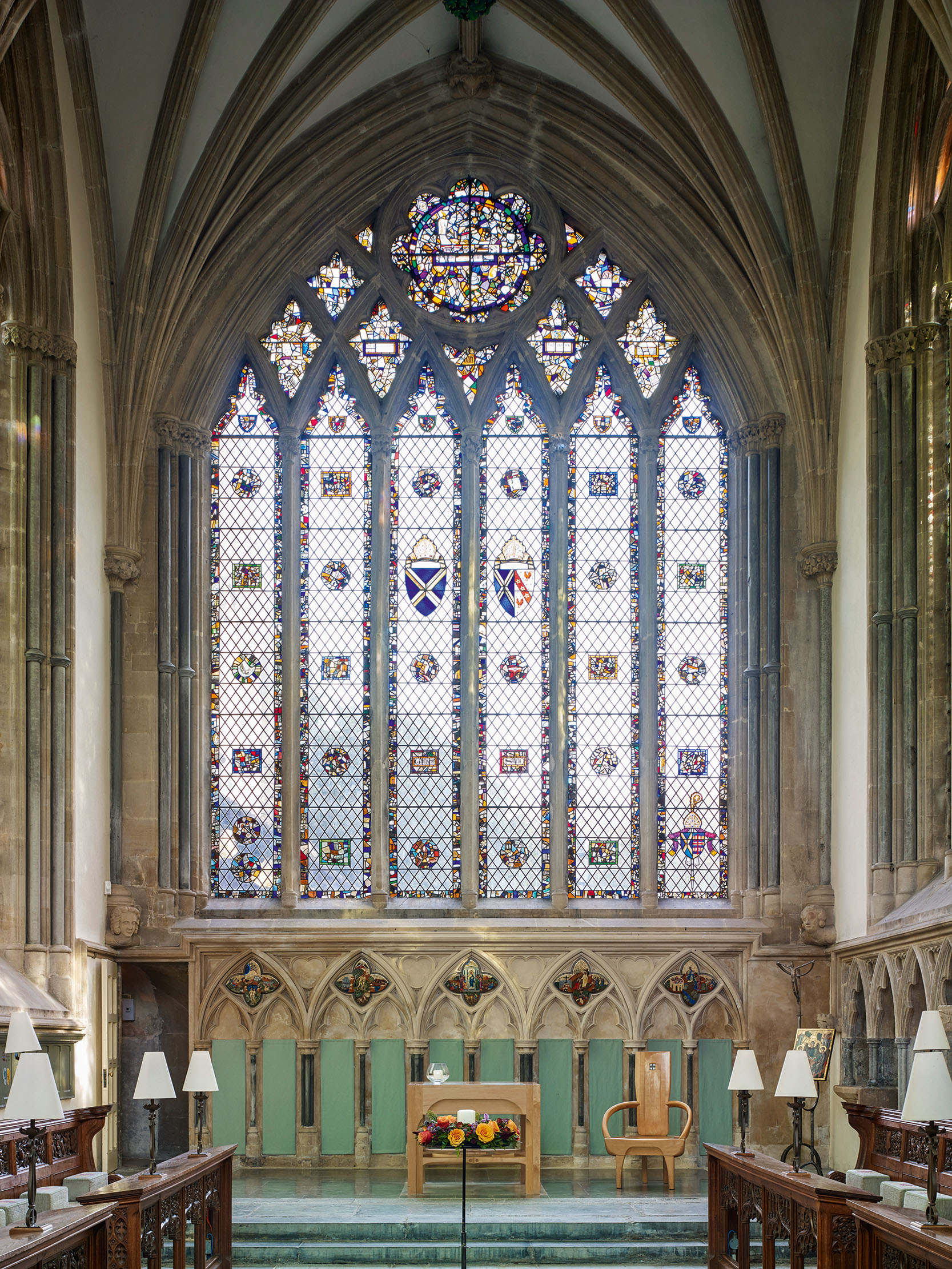
In 1846, Gothic Revival architect Benjamin Ferrey was commissioned by Bishop Bagot (1845–54) to add a new floor over Jocelin’s range, reconfigure the interior and erect the present porch. Ferrey worked without constraint, restoring and re-creating medieval details. Much to his annoyance, the Bishop commissioned ‘an ignorant upholsterer of Bath’ (in the judgement of the antiquarian J. H. Parker) to furnish the main rooms (Fig 5), yet they show an acute and impressive awareness of local late-Gothic detailing.
Over the past century, the usage of the palace has gradually changed, although it is still occupied by the Bishop of Bath and Wells, an astonishing and important continuity. The property is now owned by the Church Commisioners but The Palace Trust, first formed in 1968, works to preserve and make publicly accessible the palace and its 14 acres of gardens. As part of this responsibility, the trust launched a £4.1 million development project with the support of the Heritage Lottery Fund in 2010, to improve the presentation of the site and create a new cafe. Last year, a record 460,000 visitors crossed the drawbridge.
This success should serve as a rebuke to those Church Commissioners who, in 2013, attempted to remove the bishop from the building, almost certainly with the intention of selling it (as they have done at other sites elsewhere). The reaction to this scandalous undertaking was a powerful reminder of how valued and loved the palace and its gardens are by the people of Wells. Long may it remain The Bishop’s Palace.
You can find out more about the palace and plan a visit at bishopspalace.org.uk

John spent his childhood in Kenya, Germany, India and Yorkshire before joining Country Life in 2007, via the University of Durham. Known for his irrepressible love of castles and the Frozen soundtrack, and a laugh that lights up the lives of those around him, John also moonlights as a walking encyclopedia and is the author of several books.